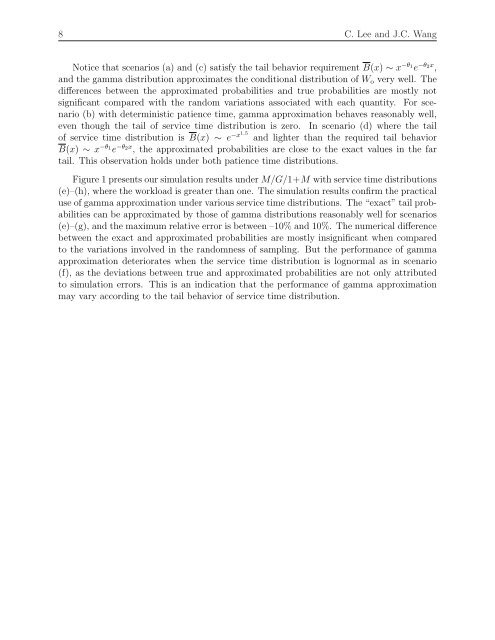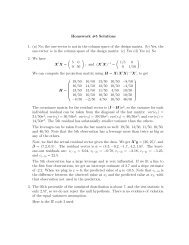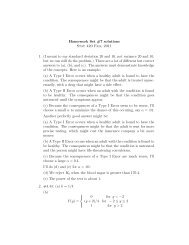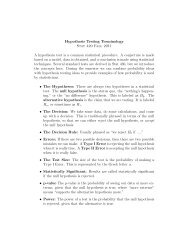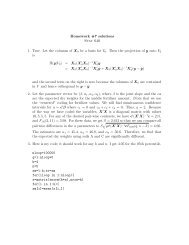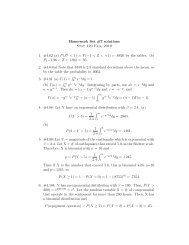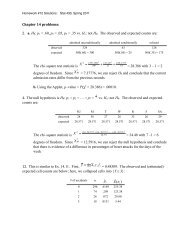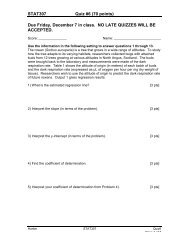Waiting time probabilities in the M/G/1 + M queue - Statistics ...
Waiting time probabilities in the M/G/1 + M queue - Statistics ...
Waiting time probabilities in the M/G/1 + M queue - Statistics ...
Create successful ePaper yourself
Turn your PDF publications into a flip-book with our unique Google optimized e-Paper software.
8 C. Lee and J.C. Wang<br />
Notice that scenarios (a) and (c) satisfy <strong>the</strong> tail behavior requirement B(x) ∼ x −θ 1<br />
e −θ2x ,<br />
and <strong>the</strong> gamma distribution approximates <strong>the</strong> conditional distribution of W o very well. The<br />
differences between <strong>the</strong> approximated <strong>probabilities</strong> and true <strong>probabilities</strong> are mostly not<br />
significant compared with <strong>the</strong> random variations associated with each quantity. For scenario<br />
(b) with determ<strong>in</strong>istic patience <strong>time</strong>, gamma approximation behaves reasonably well,<br />
even though <strong>the</strong> tail of service <strong>time</strong> distribution is zero. In scenario (d) where <strong>the</strong> tail<br />
of service <strong>time</strong> distribution is B(x) ∼ e −x1.5 and lighter than <strong>the</strong> required tail behavior<br />
B(x) ∼ x −θ 1<br />
e −θ2x , <strong>the</strong> approximated <strong>probabilities</strong> are close to <strong>the</strong> exact values <strong>in</strong> <strong>the</strong> far<br />
tail. This observation holds under both patience <strong>time</strong> distributions.<br />
Figure 1 presents our simulation results under M/G/1+M with service <strong>time</strong> distributions<br />
(e)–(h), where <strong>the</strong> workload is greater than one. The simulation results confirm <strong>the</strong> practical<br />
use of gamma approximation under various service <strong>time</strong> distributions. The “exact” tail <strong>probabilities</strong><br />
can be approximated by those of gamma distributions reasonably well for scenarios<br />
(e)–(g), and <strong>the</strong> maximum relative error is between –10% and 10%. The numerical difference<br />
between <strong>the</strong> exact and approximated <strong>probabilities</strong> are mostly <strong>in</strong>significant when compared<br />
to <strong>the</strong> variations <strong>in</strong>volved <strong>in</strong> <strong>the</strong> randomness of sampl<strong>in</strong>g. But <strong>the</strong> performance of gamma<br />
approximation deteriorates when <strong>the</strong> service <strong>time</strong> distribution is lognormal as <strong>in</strong> scenario<br />
(f), as <strong>the</strong> deviations between true and approximated <strong>probabilities</strong> are not only attributed<br />
to simulation errors. This is an <strong>in</strong>dication that <strong>the</strong> performance of gamma approximation<br />
may vary accord<strong>in</strong>g to <strong>the</strong> tail behavior of service <strong>time</strong> distribution.


